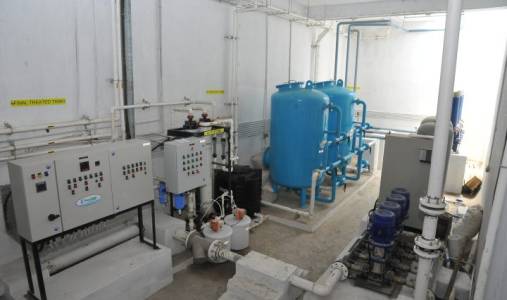Description
Sewage Wastewater: A Complex Mixture Requiring Careful Management
Sewage wastewater, also known as domestic wastewater, is a complex mixture of liquid waste discharged from homes, businesses, and institutions. It's significantly more than just water; it's a fluid containing a variety of organic and inorganic materials that pose significant environmental and public health risks if not properly treated. Understanding its composition is crucial for effective wastewater management.
Key Components of Sewage Wastewater:
- Water: The primary constituent, typically making up 99.9% of the volume.
- Organic Matter: This includes:
- Human waste: Feces, urine, and other bodily fluids containing bacteria, viruses, parasites, and organic compounds.
- Food waste: Leftover food scraps, oils, and grease that contribute to biological oxygen demand (BOD).
- Soaps and detergents: Containing surfactants and phosphates that affect water quality.
- Other organic debris: Leaves, paper, and other organic materials that enter the system.
- Inorganic Matter: This includes:
- Minerals: Salts, metals (e.g., lead, copper), and other inorganic compounds.
- Sediments: Sand, silt, and other suspended solids.
- Chemicals: Cleaning agents, pharmaceuticals, and industrial byproducts that can contaminate the water.
- Pathogens: A diverse range of disease-causing organisms, including bacteria (e.g., E. coli), viruses (e.g., norovirus), and parasites (e.g., Giardia).
- Nutrients: Nitrogen and phosphorus, primarily from human waste, fertilizers, and detergents, which can contribute to eutrophication in receiving waters.
Challenges Posed by Untreated Sewage Wastewater:
Untreated sewage poses numerous environmental and public health risks, including:
- Water Pollution: Contamination of rivers, lakes, and oceans, leading to decreased water quality and harming aquatic life.
- Disease Transmission: Spread of waterborne diseases through direct contact or consumption of contaminated water.
- Eutrophication: Excessive nutrient enrichment of water bodies, causing algal blooms and oxygen depletion, leading to "dead zones."
- Soil Contamination: If wastewater is improperly disposed of, it can leach into the ground and contaminate soil and groundwater.
- Air Pollution: Release of foul-smelling gases during decomposition.
Wastewater Treatment Solutions:
Effective wastewater treatment is essential to mitigate these risks. Treatment processes typically involve several stages, including:
- Preliminary treatment: Removing large debris and grit.
- Primary treatment: Settling out suspended solids.
- Secondary treatment: Biological treatment to remove organic matter.
- Tertiary treatment: Advanced treatment to remove nutrients, pathogens, and other contaminants.
Conclusion:
Sewage wastewater is a complex and potentially hazardous material. Proper collection, treatment, and disposal are crucial for protecting public health and the environment. Understanding the composition and challenges associated with sewage wastewater is vital for developing and implementing effective wastewater management strategies.
